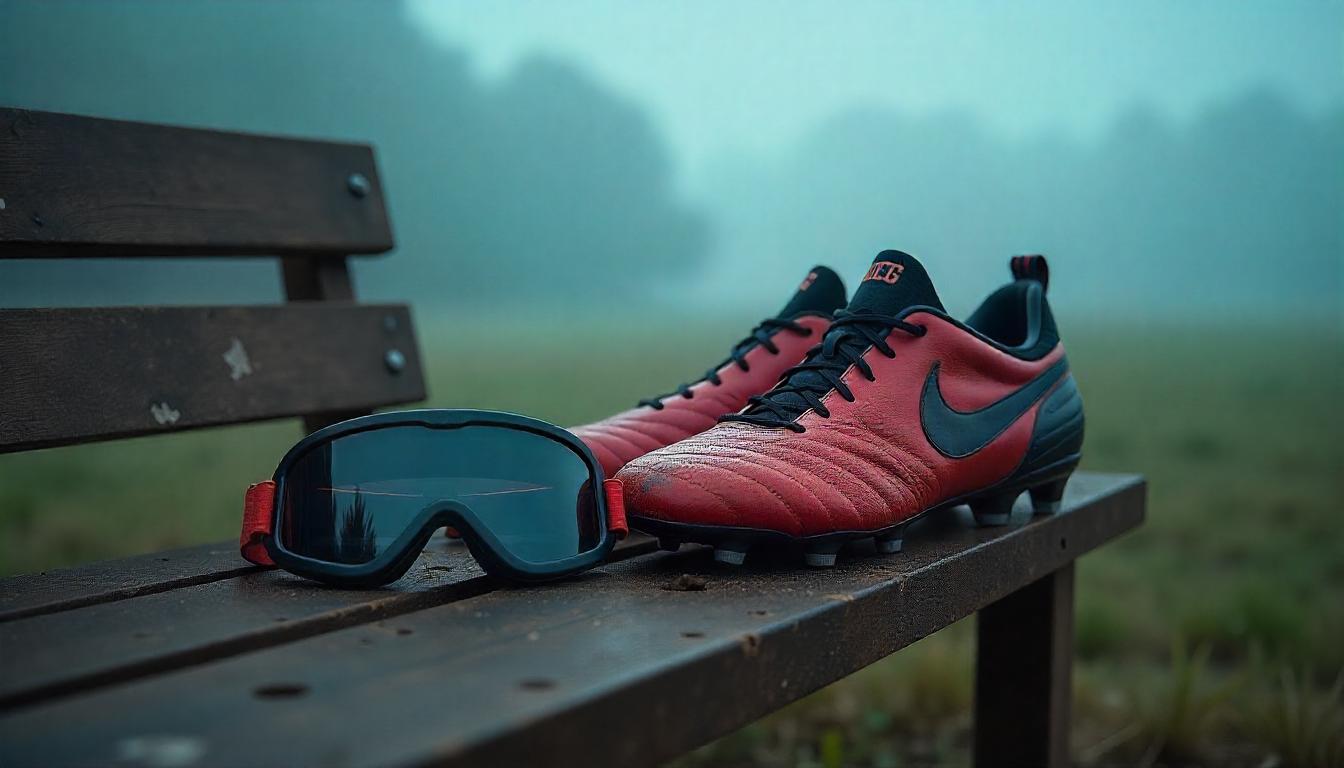There are footballers who dazzle with technique, others with goals. But then there are the rare ones who radiate a kind of aesthetic gravity—who look like they were built to be bootlegged onto backpacks, scribbled into notebook margins, or turned into 8-bit FIFA street avatars. In the golden glow of late ’90s and early 2000s football culture, no one embodied this more than Edgar Davids.
If you were around back then, the image is burned into your football brain like an over-watched VHS: the Juventus black-and-white, number 26, dreadlocks swaying in chaotic rhythm, Oakley-style goggles catching the floodlights like a sci-fi knight charging into midfield battle. This was the Edgar Davids nameset era, where the kits, the fonts, and the swagger converged into something greater than the sum of its polyester parts.
This was more than drip. This was iconography.
The Birth of a Look
Davids wasn’t just a midfielder; he was a movement. And not just because of the dynamism he brought to the pitch (though his relentless pressing and outside-of-the-foot passes could soundtrack any Nike Joga Bonito ad). His look was, and remains, one of the most distinct in football history.
The dreadlocks were already there when he started climbing the ranks at Ajax in the mid-’90s—remnants of his Surinamese roots and Caribbean cool. But it was the prescription goggles, adopted after glaucoma surgery in 1999, that transformed him from cult figure to cultural superhero. In a sea of short-back-and-sides, Davids looked like a cyborg sent from the future of football.
At a time when football style was still trapped between utility and tradition, Davids was cosmic. You couldn’t tell if he was about to win the midfield battle or save the Earth from an alien invasion.
Font Games and Kit Bootlegs
What made Davids’ era so aesthetic wasn’t just the man—it was the kits and fonts that framed him like art in motion. The Juventus nameset, with its clean, bold letters and numbers bordered in a minimalist stripe, looked like it was designed to be faked. And fake it they did—on Canal Street, in Bangkok night markets, and from trunk-sellers parked outside Sunday league grounds.
The Davids kits weren’t just jerseys—they were grails. The kind you wore even if you weren’t a Juve fan. Even if you didn’t know where Suriname was. Even if you never watched Serie A at 2 a.m. on a dusty illegal satellite stream. You wore it because Davids looked like no one else.
The bootleg versions often got the fonts slightly off—maybe too thick, maybe the spacing looked like a ransom note—but the vibe? The vibe was always right. And nothing felt cooler than “DAVIDS 26” stretched across your back like a badge of rebellious honor.
A Streetwear Precursor in Football Boots
Long before football and streetwear officially got married—before Virgil Abloh’s Off-White touched a Mercurial or before Adidas x Gucci became an accepted thing—Davids was the prototype.
He was unofficially streetwear in motion.
His affinity for the Nike Tiempo and Mercurial silo gave those boots a rawness that they lacked on more polished players. He didn’t glide. He stormed. And in doing so, he made the boots and the nameset part of an almost superhero uniform—something closer to comic-book legend than catalog model.
It’s no coincidence that decades later, Nike would lean hard into this nostalgia when launching its “Scorpion KO” ads and FIFA Street reboots. Davids wasn’t just featured—he was central. Because in the eyes of every late millennial football fan, he was the street.
From Pitch to Pop Culture
You didn’t have to be a football nerd to recognize the silhouette. The dreadlocks, the goggles, the low center of gravity like a comic book linebacker in Copa Mundials—he was instantly drawable, instantly memorable.
Cartoons, FIFA games, mixtape covers, graffiti murals in Amsterdam and Milan—Davids became shorthand for a time when football wasn’t just about goals and results. It was about aura.
This was the same era that birthed the Nike cage commercials, that venerated R9’s vapor trails and made Zidane’s baldness an aesthetic. Footballers were avatars. But no one’s look translated like Davids.
Legacy and the Nameset Renaissance
We’re now in a renaissance of retro football fashion. Vintage kits are being reissued, namesets remixed, and old fonts revived with the same reverence as album art from the vinyl era. And you can bet your last knockoff Euro that “DAVIDS 26” is among the most requested retro prints.
You see it on reworked Juventus shirts in Shoreditch thrift shops, on hoodies screen-printed with his silhouette in Seoul, and on bootleg Tees that pop up on Etsy like relics of a cooler past.
The goggles, once a medical necessity, are now an accessory of legend. They even made an appearance in the avatar era—Fortnite, FIFA Ultimate Team, you name it. Davids went digital, but the essence stayed analog. All grit. All style.
The Man Behind the Look
It’s worth remembering that behind the aesthetic was a baller’s baller. A Champions League winner, a pitbull in the midfield, and a guy who wasn’t afraid to scrap with teammates or take a political stance. He challenged racism in football, sometimes rubbed coaches the wrong way, and always played with a chip on his shoulder the size of Amsterdam.
The nameset era might remember him for the goggles and the fonts. But those who watched him? They remember the fire.
Final Whistle
In an age where football has gone full Instagram filter—every kit drop a marketing campaign, every tunnel walk a runway—Edgar Davids stands out as the original template. Not curated. Just cool.
He didn’t need a stylist. He was the style.
And if you’ve still got that bootleg Juventus kit buried in your closet, go pull it out. Wear it proud. Because that’s not just retro—that’s history.


